Deck 1: Structure and Bonding
Question
Question
Question
Question
Question
Question
Question
Question
Question
Question
Question
Question
Question
Question
Question
Question
Question
Question
Question
Question
Question
Question
Question
Question
Question
Question
Question
Question
Question

Unlock Deck
Sign up to unlock the cards in this deck!
Unlock Deck
Unlock Deck
1/29
Play
Full screen (f)
Deck 1: Structure and Bonding
1
Exhibit 1-2
Consider the structure of urea,shown below,to answer the following question(s).
Refer to Exhibit 1-2.The carbon atom in urea is:
A)sp3 hybridized
B)sp2 hybridized
C)sp hybridized
D)not hybridized
Consider the structure of urea,shown below,to answer the following question(s).

Refer to Exhibit 1-2.The carbon atom in urea is:
A)sp3 hybridized
B)sp2 hybridized
C)sp hybridized
D)not hybridized
sp2 hybridized
2
Exhibit 1-3
Determine the hybridization for the indicated atoms in each structure below.
Refer to Exhibit 1-3.The hybridization of this oxygen atom (B) is ______.
Determine the hybridization for the indicated atoms in each structure below.

Refer to Exhibit 1-3.The hybridization of this oxygen atom (B) is ______.
sp3
3
Convert the following molecular model into a condensed structure and a skeletal structure. 



4
Exhibit 1-3
Determine the hybridization for the indicated atoms in each structure below.
Refer to Exhibit 1-3.The hybridization of this carbon atom (C) is ______.
Determine the hybridization for the indicated atoms in each structure below.

Refer to Exhibit 1-3.The hybridization of this carbon atom (C) is ______.

Unlock Deck
Unlock for access to all 29 flashcards in this deck.
Unlock Deck
k this deck
5
The original question was combined with #15.This placeholder question is here to maintain the integrity of the numbering system between the printed copy and ExamView.Therefore,it has been marked "do not use on test" in ExamView's question information dialog.As a result,this placeholder question is automatically prevented from being chosen as a test question.

Unlock Deck
Unlock for access to all 29 flashcards in this deck.
Unlock Deck
k this deck
6
Convert the following molecular model into a condensed structure and a skeletal structure. 


Unlock Deck
Unlock for access to all 29 flashcards in this deck.
Unlock Deck
k this deck
7
Exhibit 1-2
Consider the structure of urea,shown below,to answer the following question(s).
Refer to Exhibit 1-2.Fill in any non-bonding valence electrons that are missing from the line-bond structure.
Consider the structure of urea,shown below,to answer the following question(s).

Refer to Exhibit 1-2.Fill in any non-bonding valence electrons that are missing from the line-bond structure.

Unlock Deck
Unlock for access to all 29 flashcards in this deck.
Unlock Deck
k this deck
8
Exhibit 1-3
Determine the hybridization for the indicated atoms in each structure below.
Refer to Exhibit 1-3.The hybridization of this carbon atom (D) is ______.
Determine the hybridization for the indicated atoms in each structure below.

Refer to Exhibit 1-3.The hybridization of this carbon atom (D) is ______.

Unlock Deck
Unlock for access to all 29 flashcards in this deck.
Unlock Deck
k this deck
9
Exhibit 1-4
Propose possible structures for a molecule that meets each of the following descriptions.
Refer to Exhibit 1-4.Contains two sp3 hybridized carbons and two sp hybridized carbons.
Propose possible structures for a molecule that meets each of the following descriptions.
Refer to Exhibit 1-4.Contains two sp3 hybridized carbons and two sp hybridized carbons.

Unlock Deck
Unlock for access to all 29 flashcards in this deck.
Unlock Deck
k this deck
10
How many electrons does silicon have in its valence shell?

Unlock Deck
Unlock for access to all 29 flashcards in this deck.
Unlock Deck
k this deck
11
Give the ground-state electron configuration for carbon (atomic number 6).

Unlock Deck
Unlock for access to all 29 flashcards in this deck.
Unlock Deck
k this deck
12
Convert the following molecular model into a condensed structure and a skeletal structure. 


Unlock Deck
Unlock for access to all 29 flashcards in this deck.
Unlock Deck
k this deck
13
Draw an orbital picture for acetylene,C2H2.Clearly label each bond type and indicate the type of orbitals involved in each bond.

Unlock Deck
Unlock for access to all 29 flashcards in this deck.
Unlock Deck
k this deck
14
Exhibit 1-4
Propose possible structures for a molecule that meets each of the following descriptions.
Refer to Exhibit 1-4.Contains one sp3 hybridized carbon and two sp2 hybridized carbons.
Propose possible structures for a molecule that meets each of the following descriptions.
Refer to Exhibit 1-4.Contains one sp3 hybridized carbon and two sp2 hybridized carbons.

Unlock Deck
Unlock for access to all 29 flashcards in this deck.
Unlock Deck
k this deck
15
Exhibit 1-2
Consider the structure of urea,shown below,to answer the following question(s).
Refer to Exhibit 1-2.The predicted NH2−C=O bond angle in urea is:
A)109.5°
B)120°
C)180°
D)not predictable
Consider the structure of urea,shown below,to answer the following question(s).

Refer to Exhibit 1-2.The predicted NH2−C=O bond angle in urea is:
A)109.5°
B)120°
C)180°
D)not predictable

Unlock Deck
Unlock for access to all 29 flashcards in this deck.
Unlock Deck
k this deck
16
Exhibit 1-3
Determine the hybridization for the indicated atoms in each structure below.
Refer to Exhibit 1-3.The hybridization of this oxygen atom (A) is ______.
Determine the hybridization for the indicated atoms in each structure below.

Refer to Exhibit 1-3.The hybridization of this oxygen atom (A) is ______.

Unlock Deck
Unlock for access to all 29 flashcards in this deck.
Unlock Deck
k this deck
17
Give the ground-state electron configuration for magnesium (atomic number 12).

Unlock Deck
Unlock for access to all 29 flashcards in this deck.
Unlock Deck
k this deck
18
Give the ground-state electron configuration for fluorine (atomic number 9).

Unlock Deck
Unlock for access to all 29 flashcards in this deck.
Unlock Deck
k this deck
19
Convert the following structure to a skeletal drawing and give its molecular formula. 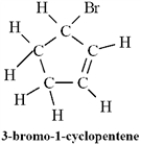


Unlock Deck
Unlock for access to all 29 flashcards in this deck.
Unlock Deck
k this deck
20
Indicate the hybridization on each of the carbon atoms indicated with a number in the molecular model shown. 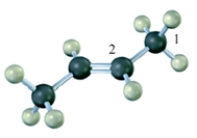


Unlock Deck
Unlock for access to all 29 flashcards in this deck.
Unlock Deck
k this deck
21
What type of hybridization is exhibited by carbon in the following substance?: 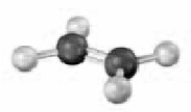
A)sp3 hybridization
B)sp2 hybridization
C)sp hybridization

A)sp3 hybridization
B)sp2 hybridization
C)sp hybridization

Unlock Deck
Unlock for access to all 29 flashcards in this deck.
Unlock Deck
k this deck
22
If all the missing bonds in the following structure are sigma bonds to hydrogen atoms,how many hydrogen atoms are missing from this structure? Atoms other than carbon are labeled. 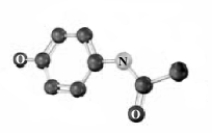
A)7
B)10
C)12
D)14
E)None of these is the correct number.

A)7
B)10
C)12
D)14
E)None of these is the correct number.

Unlock Deck
Unlock for access to all 29 flashcards in this deck.
Unlock Deck
k this deck
23
Which of the following represents a hybrid orbital?
A)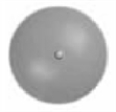
B)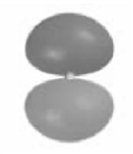
C)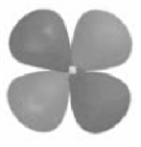
D)
A)

B)

C)

D)


Unlock Deck
Unlock for access to all 29 flashcards in this deck.
Unlock Deck
k this deck
24
Overlap of the two atomic orbitals shown could result in a: 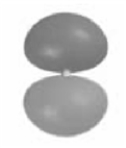

A)σ bond
B)π bond
C)σ or π depending on the direction of the overlap.


A)σ bond
B)π bond
C)σ or π depending on the direction of the overlap.

Unlock Deck
Unlock for access to all 29 flashcards in this deck.
Unlock Deck
k this deck
25
Hybridization of the atomic orbitals shown would result in: 

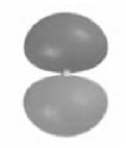
A)sp3 hybridization
B)sp2 hybridization
C)sp hybridization



A)sp3 hybridization
B)sp2 hybridization
C)sp hybridization

Unlock Deck
Unlock for access to all 29 flashcards in this deck.
Unlock Deck
k this deck
26
There are two substances with the molecular formula C2H7N.Draw them and describe how they differ.

Unlock Deck
Unlock for access to all 29 flashcards in this deck.
Unlock Deck
k this deck
27
Fill in any nonbonding valence electrons that are missing from the following structural representation of the amino acid cysteine. 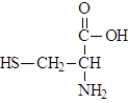


Unlock Deck
Unlock for access to all 29 flashcards in this deck.
Unlock Deck
k this deck
28
What type of hybridization is exhibited by carbon in the following substance?: 
A)sp3 hybridization
B)sp2 hybridization
C)sp hybridization

A)sp3 hybridization
B)sp2 hybridization
C)sp hybridization

Unlock Deck
Unlock for access to all 29 flashcards in this deck.
Unlock Deck
k this deck
29
Draw the orbital diagram showing the ground-state electron configuration of sulfur.

Unlock Deck
Unlock for access to all 29 flashcards in this deck.
Unlock Deck
k this deck



